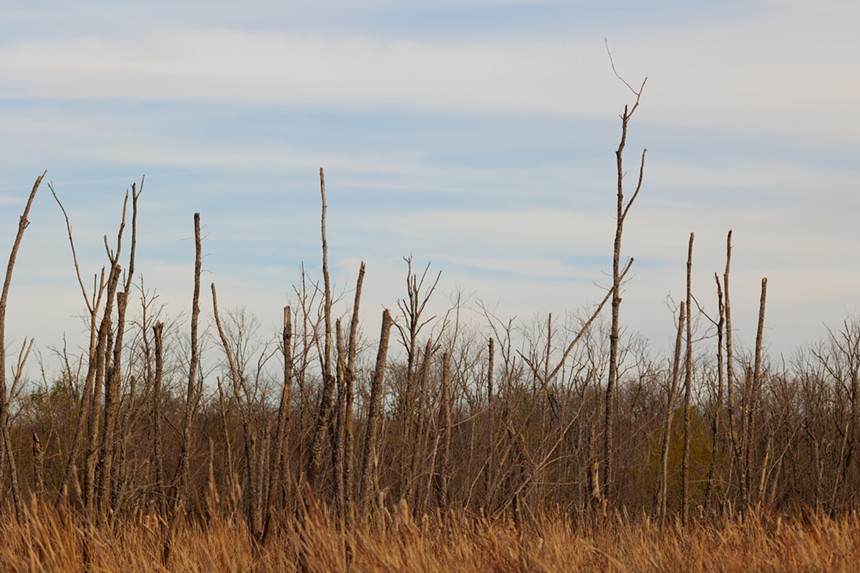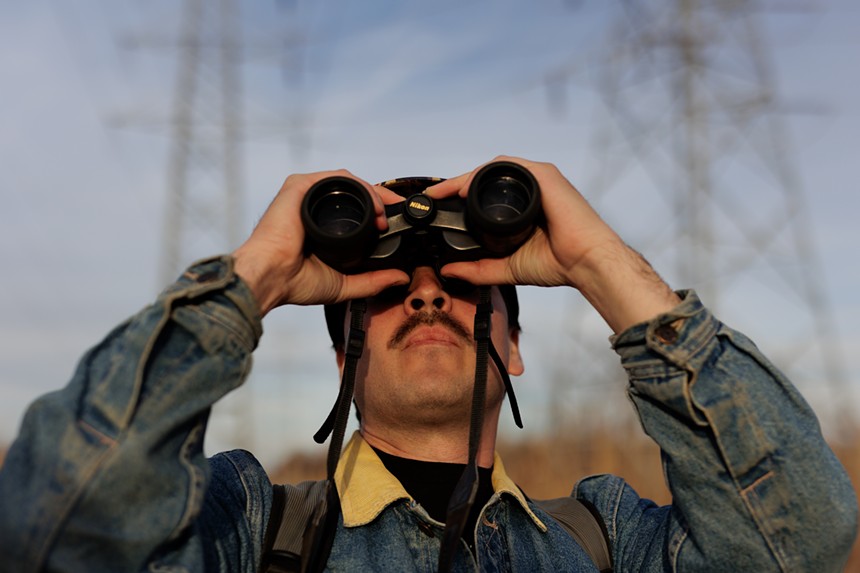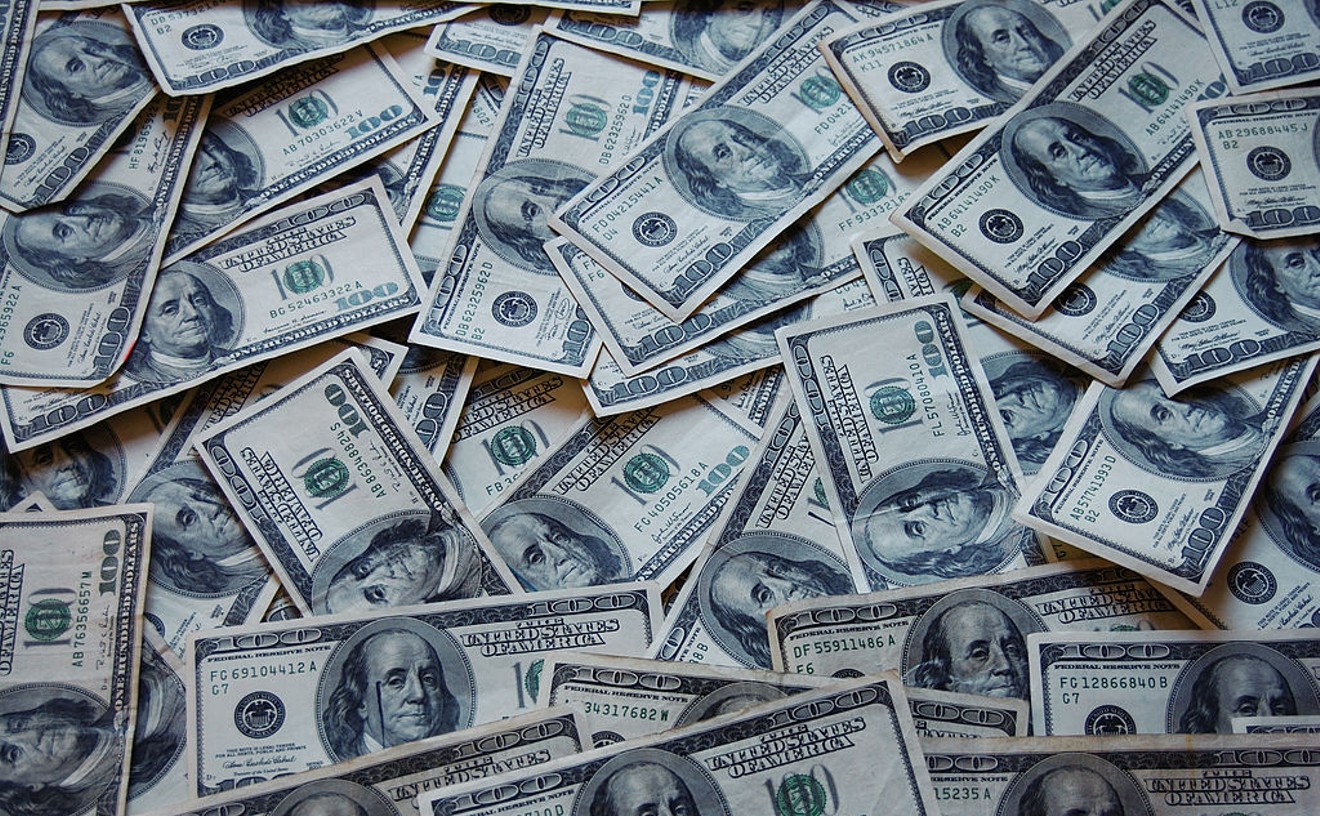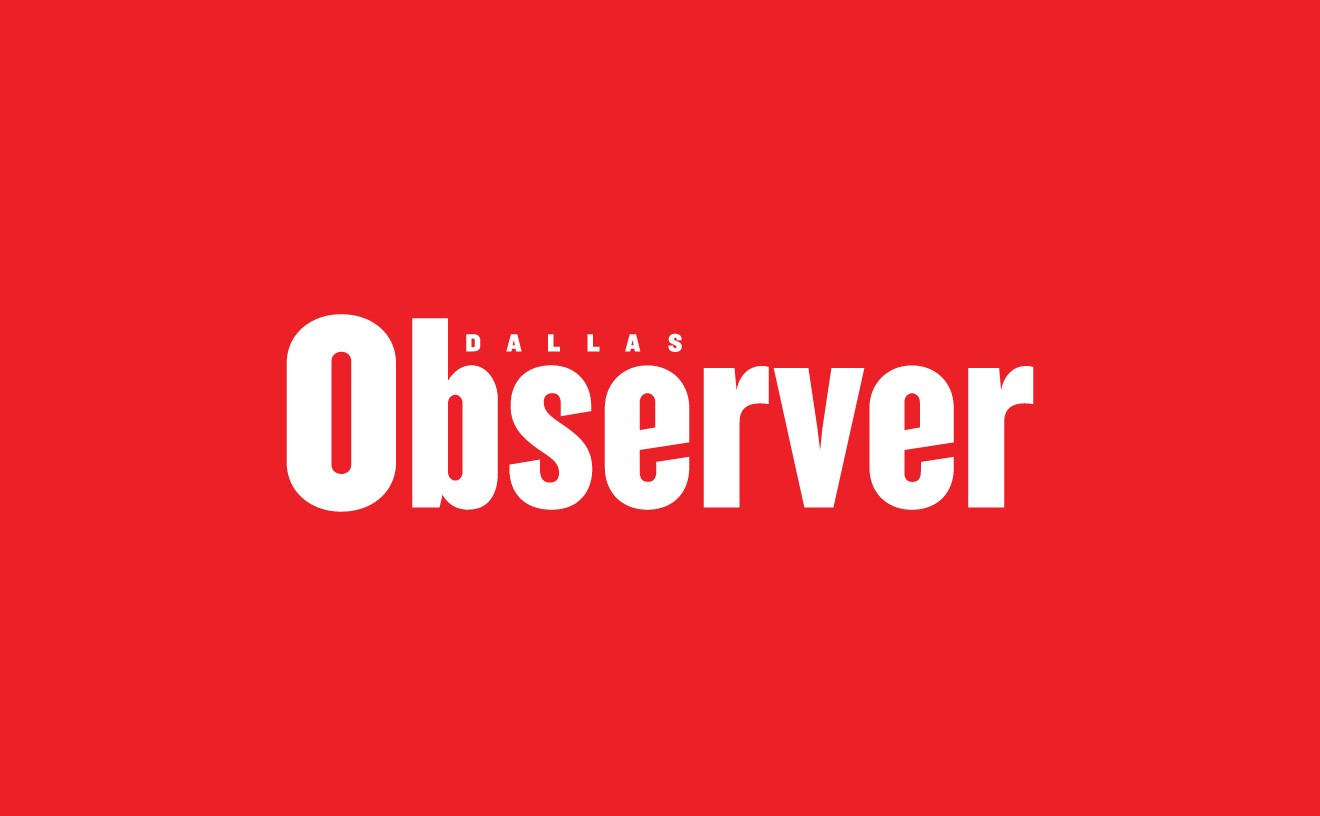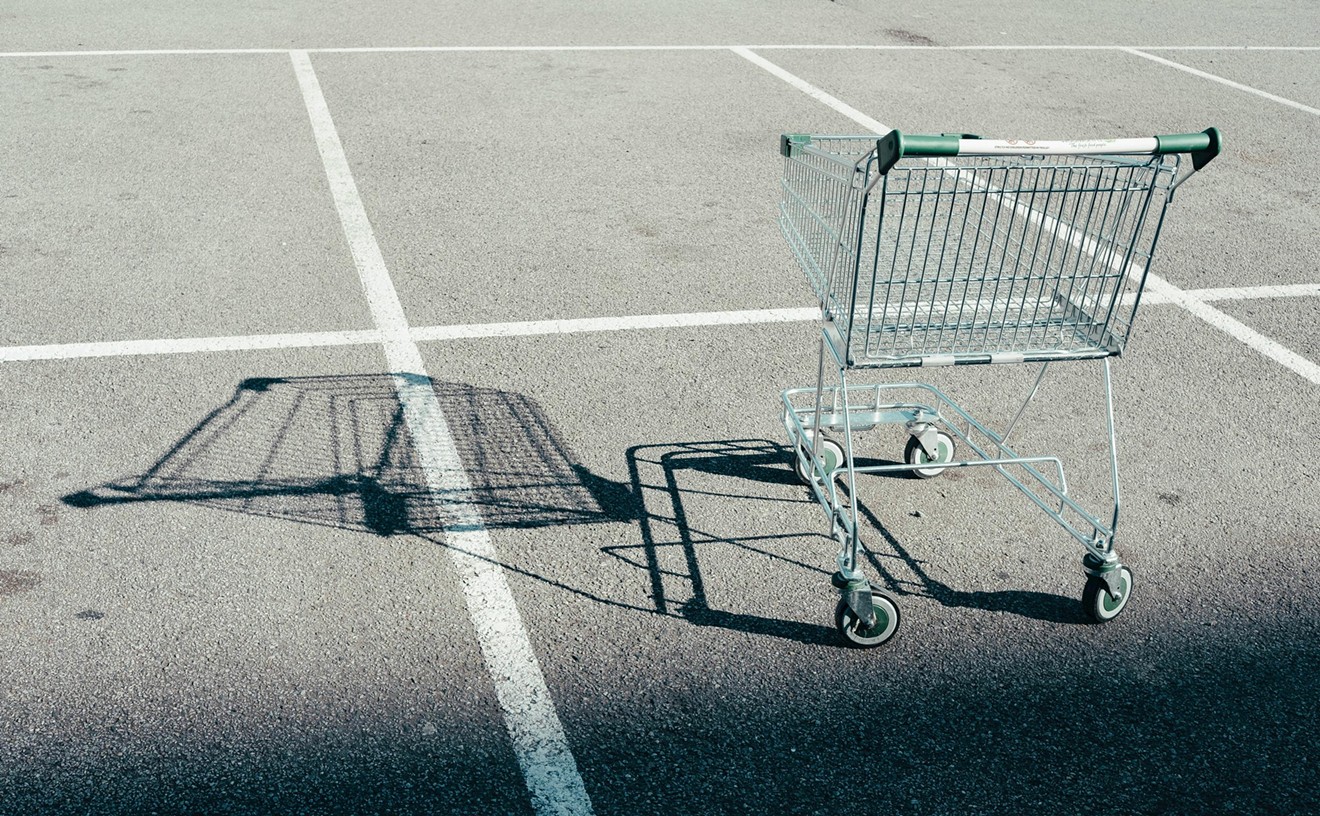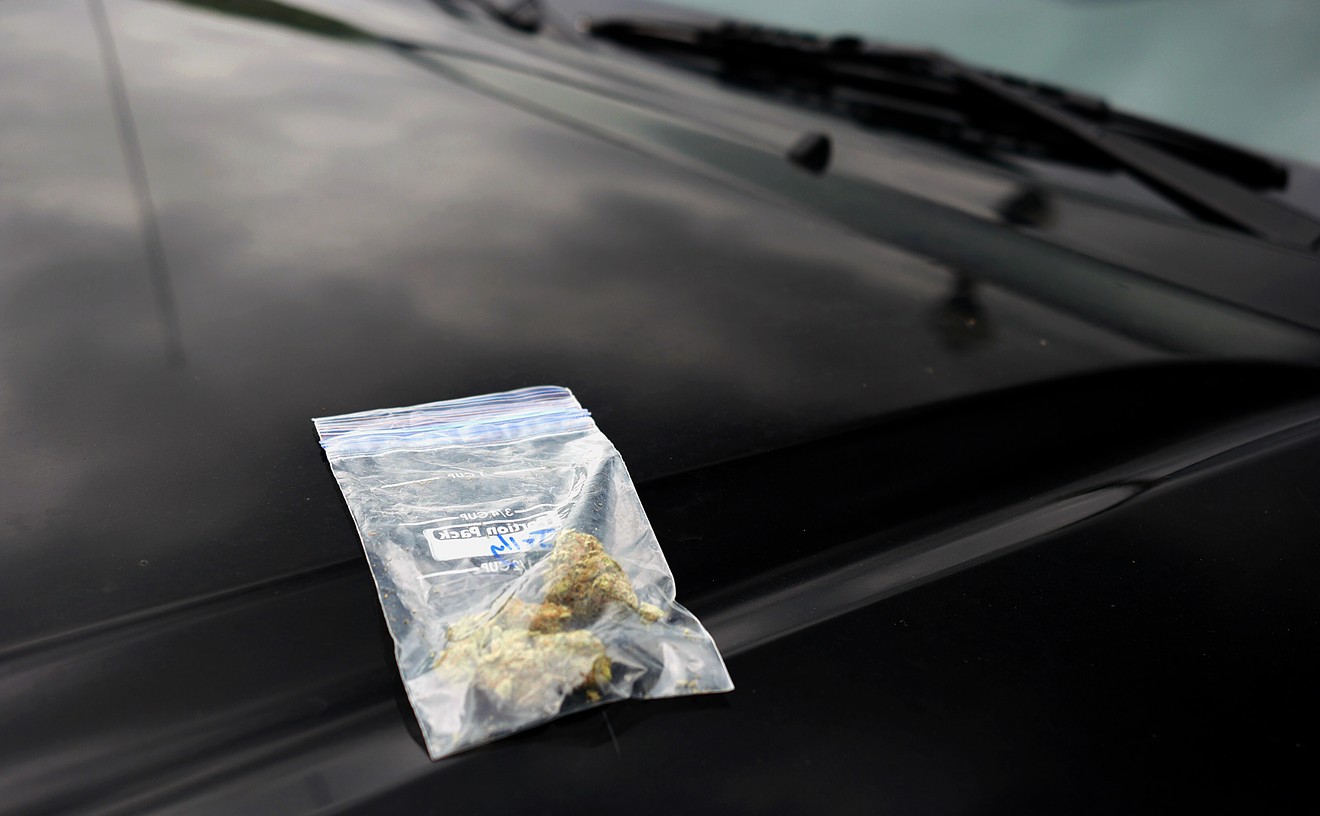On this crisp afternoon in December, traffic roared by on Dallas’ U.S. Highway 175. But it looked like the pair was stepping onto the surface of the moon.
Water resources professional Alexander Neal and environmental advocate Ben Sandifer surveyed the site of the former so-called Blue Hole in the Great Trinity Forest. Dark earth had settled where turquoise waters once shimmered.
In late July, Neal filmed himself kayaking on what was then a deep, crystal-clear swamp and posted it to TikTok. He theorized that a water main leak had erupted, discharging millions of gallons of drinking water each day for years on end. Nutria swam by in the since-gone-viral video, which has racked up well over half a million views.
Neal recalled hearing the ruptured water pipe emitting a “loud rumbling sound” beneath his boat. While he was glad to see that the city had finally addressed the issue, he knew much damage had been done.
“Standing right here, I can look out that way and see a lot of dead trees,” Neal said, pointing toward the jagged wooden silhouettes. “All of these without small branches on them, those are all trees that died from the water here. So, now that I get to stand here and see how many dead trees there are, it's pretty sad.”
Neal’s TikTok video and the ensuing media coverage put pressure on the city to tend to the problem. The pipeline was eventually repaired and restored to service on Sept. 11.
@lustytexan Massive water main break within the City of Dallas. Perhaps tens of millions of gallons of drinking water discharging daily for the past five years into the Great Trinity Forest. No fix from the city. Continuous discharge at thousands of gallons per minute is flooding hundreds of acres of bottomland hardwood floodplain forest lessening our city's ability to withstand floods, costing ratepayers, and killing thousands of trees within a vital urban forest. #dallastx #dallas #txwater #txdrought #trinityriver #whiterockcreek #greattrinityforest #dallastexas #txflood #cityofdallas #southdallas #urbanforestry #infrastructure #watersupply #waterleak ♬ original sound - lustytexan
Sandifer, who sounded mildly exasperated when describing his own history with the leak, said he’d alerted the city to the problem years ago. Much of the surrounding woody vegetation had perished because of the pond of treated drinking water. Despite infernal Texas summers and drought, the Blue Hole’s water level stayed unnaturally persistent.
Fish weren’t present in the crystalline pool, as far as Sandifer knows, because they can’t survive in chlorinated water. He did spot wading birds that are rare for this part of North Texas, not to mention beaver and river otters and nutria, the last of which he described as “a cute little cuddly thing that's just a large rat.”
After the breach was fixed, the Blue Hole went “bone dry” in nine days, Sandifer said. He conducted a search for beached animals, like turtles and frogs, but didn’t find any evidence of stranded soldiers: “I think everybody made it out of there clean.”
That much is good, of course, but Sandifer views the case of the Blue Hole as one of gross neglect. Water is expensive in Dallas, he said. The resource is a revenue-generator for the city, he added, which acts as a “net exporter of water to other communities” in the area.
As the leak raged on during last summer’s brutal heatwave, the city petitioned constituents to conserve by limiting their lawn-watering schedules.
“To see this waste, which is finished water, it'd be like a restaurant throwing complete hot entrees away — just taking them out of the kitchen and just chunking them: not giving them to the needy,” Sandifer said.
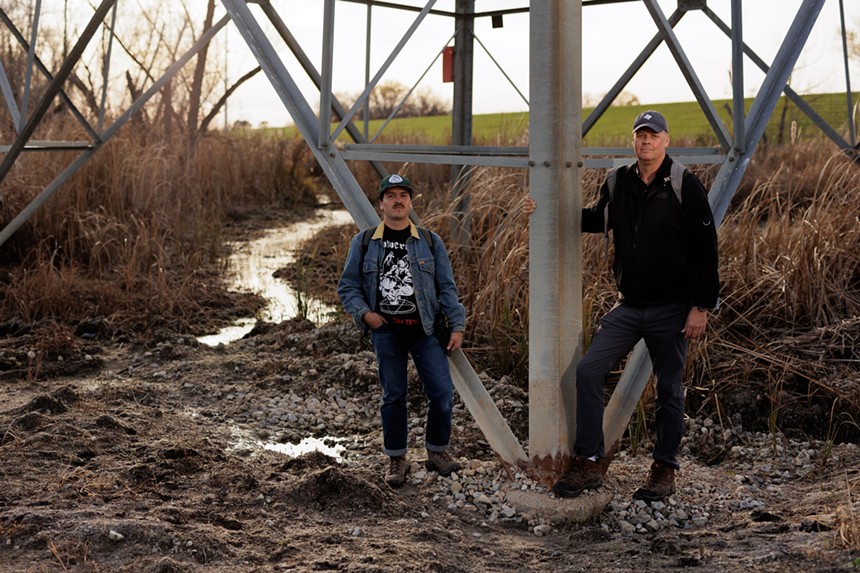
Water resources professional Alexander Neal (left) and local conservationist Ben Sandifer stand near the spot where the water main break was flooding the area.
Nathan Hunsinger
The spokesperson did not respond to questions about when the problem originated and whether the city is aware of any similar leaks. She said the pipeline bled some 12,000 gallons of water each day, which would add up to 3.6 million gallons.
Neal, however, called that estimate “laughable.” It would be akin to leaving a garden hose on at half-blast, he said. His own calculation is that 2 million gallons may have drained daily, and that’s just a conservative guess.
On top of that, D Magazine reported last August that the Blue Hole seemed to show up in satellite imagery as early as 2017. That would mean the leak likely plagued the area for far longer than the city admits.
“I sort of think that they're gaslighting the people that have been trying to tell the truth about how much water has come out of there,” Neal said. “Their estimate was a horrible, horrible misjudgment of the actual discharge that has come out of that leak.”
“Standing right here, I can look out that way and see a lot of dead trees.” – Alexander Neal, water resources professional
tweet this
This isn’t the first time that bad-water news has dogged Dallas.
In 2019, “a putrid black liquid” spilled into the Trinity River for at least a week, according to The Dallas Morning News. Officials believed it to be spoiled food, maybe decaying vegetables and fruit. Several years earlier, a different kind of waste had been flung into the river: pigs’ blood.
More recently, in July 2022, a main break in a southern Dallas neighborhood gushed water from a hole in the road, flooding one man’s home and cars.
“Thunder! Like rocks coming all over the top of my house,” the resident, who was Black, told WFAA at the time. “I said something ain’t right.”
Standing near the former Blue Hole, Sandifer noted that it’s situated in a community of color. The median household income for the adjacent Bonton neighborhood is a little more than $32,000, according to the real estate website Point2Homes. Bonton has also been considered a food desert.
A documentary named for two historically Black neighborhoods in South Dallas, Bonton + Ideal, highlighted the social and economic divides within the city’s geographic split. Residents from these lower enclaves told filmmakers that they grew up without electricity, good schools, running water and other services. Homes were exposed to regular flooding, having been constructed on the Trinity River floodplain.
Southern Dallas residents have long endured issues far less common elsewhere in the city, including a lack of trash pickup, fair housing and street repair. A District 8 challenger in last May’s City Council race, Davante Peters, told the Observer ahead of the election that community members face snaillike police response times.
That district for years suffered from a nightmare of toxic waste. South Dallas’ Floral Farms neighborhood once served as the site of a 70,000-ton hill of illegally discarded asphalt shingles. Residents fought to topple the so-called Shingle Mountain from 2018 to 2021.
“Historically,” Peters told the Observer last spring, “they use our side of town as the dumping grounds.”
Detractors argue that Dallas’ legacy of racism plays a significant role in the environmental injustice of the Blue Hole today. Or, as Sandifer put it: “In the back of my mind, I always said, 'This would never, ever happen in North Dallas.'”
***
Dallas Environmental Commission member Temeckia Derrough worried about the mosquito population in the park near the Blue Hole. The pests, which are carriers of diseases like West Nile, had been “horrible” last summer.
During a commission meeting in October, Derrough told a Dallas Water Utilities representative that the supposed 3.6 million-gallon leak had occurred in her district.
“That park is very utilized by the community of Blacks,” Derrough said. “I’m just going to be honest. It’s a Black park.”
She pressed Regina Stencel, assistant director of the water department, for answers: Were residents notified? No, because there wasn’t an interruption in service. Did the leak spike water bills? No, because it was on a transmission line, not a metered one.
Vice Chair Esther Villarreal relayed her own concerns. Bonton residents had reported “foul-tasting water.” Could the water department speak to that?
Stencel denied any water-quality issues, saying that pressure had been maintained: “There is no way that the surrounding water can go back into the pipeline.”
But, speaking with the Observer in December, Sandifer likened the once-malfunctioning pipeline to an “open wound.” He feared that if the pressure had in fact somehow dropped, swamp water could have been sucked back into the system before reaching residents’ faucets.
Sandifer delivered impassioned comments during that October Environmental Commission meeting. The way he sees it, Dallas’ top natural asset is the Great Trinity Forest, which helps to cleanse the urban air and is home to a wide array of plants and animals. “The water main break of discussion persisted since at least 2013, visible on Google Earth, at this location,” he said at the meeting.
The area in question is now a “near ecological dead zone,” Sandifer said. Hundreds upon hundreds of trees, many 20 or more feet high, were slowly drowned.
“The die-off of trees here is shockingly evident on both sides of U.S. 175,” Sandifer said. “It’ll serve as a tombstone,” he added, his voice sharply punctuating that word, “for this part of the Great Trinity Forest for decades to come.”
Environmentalists view the Blue Hole as a warning of aging infrastructure-caused calamity. The offending 30-inch pipeline was constructed in 1952, during the Truman administration, Sandifer said during the commission meeting.
The Lewisville Dam, roughly 40 miles north of the Great Trinity Forest, has also flirted with catastrophe.
In 2015, The Dallas Morning News reported that the dam was one of the country’s “most dangerous” as engineers had scrambled to patch multiple areas of concern. A breach could reportedly “put 431,000 people in harm’s way,” potentially unleashing a “65-foot-tall flood wave traveling 34 mph” that could swallow a broad swath of several North Texas communities.
Downtown Dallas would get engulfed by some 50 feet of water, the article noted. Thankfully, repairs have since been made.
Old infrastructure contributed in 2021 to North Texas losing around 40 billion gallons of water, according to KERA. The problem has only worsened in the years since. Dallas reportedly witnessed nearly 15 billion gallons go down the drain in 2022, costing $20.3 million.
Today the Blue Hole serves as a grim lesson about how the city chooses to confront issues of environmental conservation and sustainability.
“I guess you could correctly say this is a watershed moment, perhaps, in raising awareness of how we treat our open spaces,” Sandifer said.
Some recent progress has been made toward improving the state’s water infrastructure. Texas voters in November approved a constitutional amendment to create a $1 billion water fund, marking a modest boost in concern for a not-so-sexy issue. But critics contend that the money won’t stretch nearly far enough.
The measure, Proposition 6, will help to upgrade outdated water systems and create new water supplies. But one state lawmaker has argued that fully addressing Texas’ water predicament would carry a strikingly higher price tag, one totaling $500 billion.
Neal views the Blue Hole scandal as an opportunity to home in on antiquated water infrastructure. He wonders how many undiscovered leaks could be silently draining resources today.

Local conservationists Ben Sandifer (left) and Alexander Neal survey the flood damage.
Nathan Hunsinger
When it comes to the zone formerly known as the Blue Hole, Neal believes that nature can mend much of the devastation: “That area has recovered on its own before, when [it] was an agricultural area, and so it can do it again.”
Still, Neal said, it’s “embarrassing” for the city that it seemingly took a viral TikTok video to spur officials into action.
Sandifer noted that other Texas metro areas, such as San Antonio and Austin, will shell out millions in funding to try to reproduce what we have here naturally. Not embracing our wonderful habitat, one that’s easily accessed via DART, is “where we fail as Dallasites,” he said.
But Sandifer also sees some glimmers of silver lining: Many have become increasingly conscious of eco-solutions like recycling and water conservation. “And I hope that they get out and have their own voice heard in their own communities, or in the Metroplex and North Texas,” he said, “because a lot of people say that there's not a lot of nature here.
“There really is,” he added. “You just have to look for it.”


